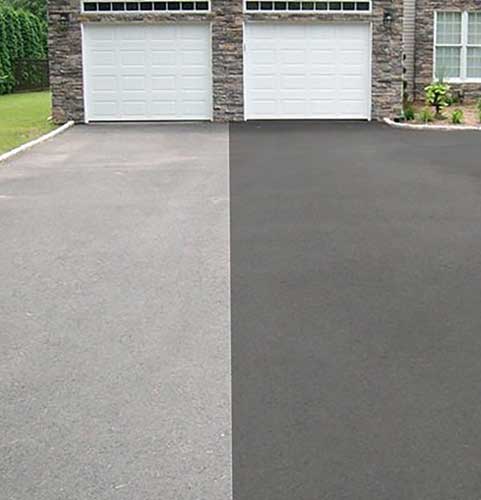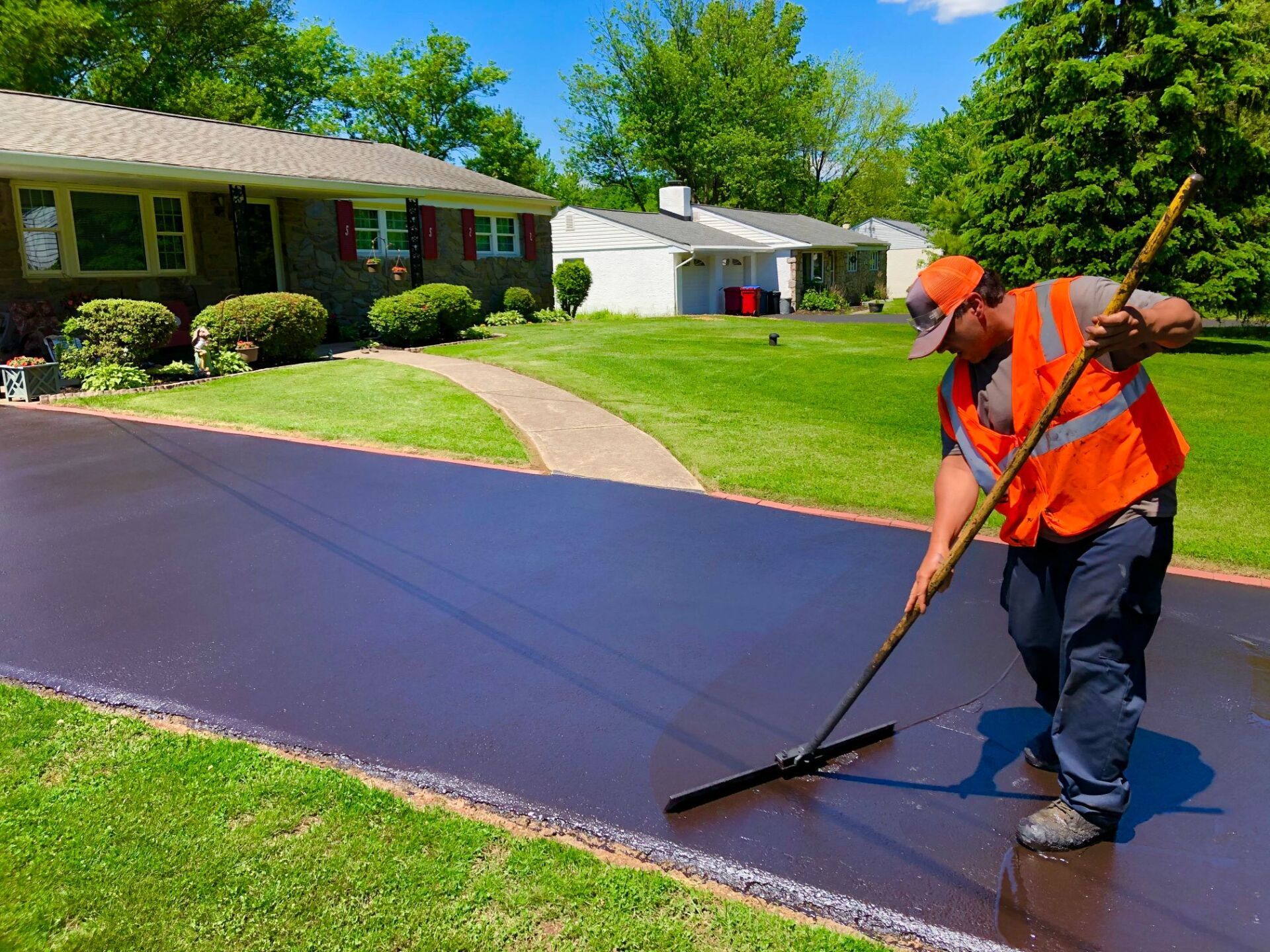Raise Commercial Charm: Warm Mix Asphalt Sealing for Angled Parking Lots
Wiki Article
Warm Mix Asphalt: A Lasting Option for Pavement
Warm Mix Asphalt (HMA) has actually arised as a leading sustainable choice for sidewalk options, supplying a myriad of ingenious innovations and ecological benefits. As the demand for eco-friendly building and construction techniques expands, discovering the subtleties of HMA's sustainability can provide useful insights into the future of pavement options.Ecological Advantages of Hot Mix Asphalt

Additionally, Warm Mix Asphalt assists to alleviate urban heat island results. Its dark shade takes in sunlight, minimizing the amount of warmth reflected back right into the ambience contrasted to lighter-colored pavements. This can reduce ambient temperature levels in metropolitan locations, decreasing the need for a/c and inevitably lowering energy usage.
On top of that, Hot Mix Asphalt adds to improved stormwater management. Its porous nature allows water to infiltrate the sidewalk and reenergize groundwater materials, reducing overflow and the threat of flooding. These environmental advantages make Hot Mix Asphalt a lasting selection for leading roads and freeways.
Power Performance in HMA Manufacturing
Is power efficiency an important aspect in the manufacturing of Hot Mix Asphalt (HMA)? Power plays a considerable role in the production of HMA, influencing both expense and ecological sustainability. One crucial facet of energy efficiency in HMA production is the use of warm mix asphalt (WMA) innovations.Furthermore, improvements in plant modern technologies have led to even more energy-efficient HMA production procedures. By maximizing power usage in HMA manufacturing, the market can decrease its carbon footprint while preserving high-grade pavement materials.
Recyclability of Hot Mix Asphalt
The recyclability of Hot Mix Asphalt (HMA) is an essential facet of its sustainability and lasting environmental impact. HMA is just one of the most recycled materials in the United States, with over 100 million loads of redeemed asphalt pavement (RAP) being recycled annually in new pavement building. Reusing HMA supplies numerous ecological benefits, such as reducing the need for virgin materials, lowering energy consumption throughout manufacturing, and reducing the amount of waste sent out to click here to find out more landfills.The procedure of reusing HMA includes grating the existing sidewalk, crushing it right into smaller items, and mixing it with brand-new aggregate and asphalt binder to develop a recycled mix. This recycled mix can usually execute in addition to and even much better than standard HMA, while calling for less raw materials and creating reduced greenhouse gas discharges. By integrating RAP into brand-new sidewalk tasks, road agencies can save natural deposits, reduce expenses, and lessen the environmental impact of roadway building and construction and maintenance tasks. Overall, the recyclability of HMA plays a substantial role in advertising lasting techniques within the pavement industry.

Long-Term Efficiency of HMA
Asphalt sidewalks show toughness and strength over an extensive duration, reflecting the long-term efficiency of Warm Mix Asphalt (HMA) Additionally, developments in HMA innovation, such as the use of polymer-modified binders and cozy mix asphalt, have better improved the sturdiness and longevity of HMA sidewalks. By prioritizing top quality building and construction and upkeep techniques, HMA continues to confirm itself as a economical and lasting remedy for resilient pavement infrastructure.
HMA: Resilience and Sustainability
Showing both toughness and sustainability, Warm Mix Asphalt (HMA) has become a keystone in the construction of long-lasting pavement infrastructures - hot mix asphalt. HMA's resilience stems from its capacity to withstand heavy tons, extreme weather, and high traffic quantities, making it a reputable selection for roadways, freeways, and airport paths. The structure of HMA, which commonly includes aggregates, binder, and filler, plays an essential role in enhancing its longevity and resistance to deterioration
Additionally, HMA's sustainability exists in its recyclability and energy-efficient manufacturing procedure. The capability to reuse redeemed asphalt pavement (RAP) in new HMA combinations minimizes the need for virgin materials and reduces the environmental impact of pavement you can look here building and maintenance. Furthermore, the power effectiveness of creating HMA depends on its reduced mixing temperatures contrasted to other sidewalk materials, bring about minimized power intake and greenhouse gas discharges.
Verdict
In verdict, warm mix asphalt (HMA) provides a sustainable option for sidewalk with its ecologically friendly attributes. HMA's recyclability, energy efficiency in manufacturing, and long-term resilience make it a green choice for road building and construction.
HMA is one of the most recycled products in the United States, with over 100 million heaps of redeemed asphalt sidewalk (RAP) being reused each year in new sidewalk building and construction.The process of reusing HMA entails crushing the existing sidewalk, squashing it right into smaller sized pieces, and mixing it with brand-new accumulation and asphalt binder to produce a recycled mix.Asphalt sidewalks show resilience and durability over a prolonged period, mirroring the long-lasting performance of Hot Mix Asphalt (HMA) Additionally, improvements in HMA innovation, such as the usage of polymer-modified binders and warm mix asphalt, have actually even more improved the toughness and durability of HMA sidewalks. The capacity to recycle recovered asphalt pavement (RAP) in brand-new HMA mixes lowers see the need for virgin products and decreases the ecological influence of pavement construction and maintenance.
Report this wiki page